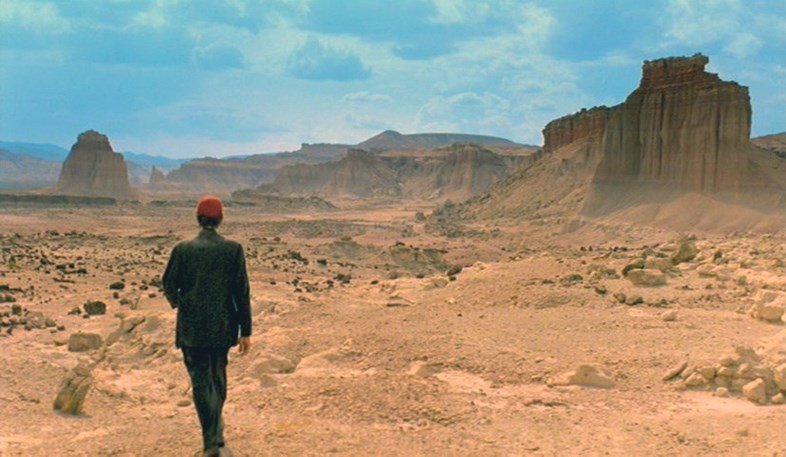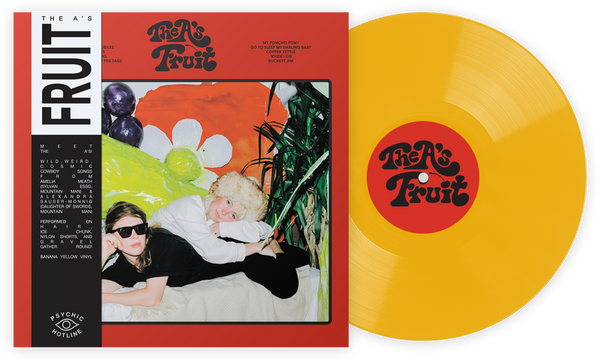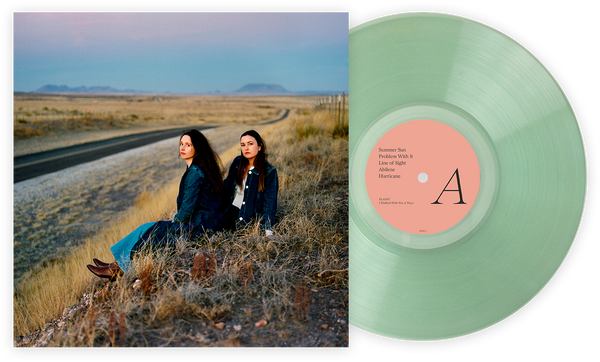“Kita hidup di ruang angkasa. Kita adalah hasil dari hubungan antara satu sama lain dan ruang tersebut.” — Luca Guadagnino
Ada emosi esoteris saat mengemudi di jalan kosong dengan jendela terbuka sambil bau senja melintas ke dalam mobil Anda dan matahari terbenam di samping Anda, atau duduk di hari musim panas di atas rumput hijau mengamati sekitar, sambil mendengarkan lagu yang membuat suasana terasa beruntung. Ada film yang berhasil menyampaikan momen-momen meditatif ini ke layar, membuatnya terasa nyata. Mereka sering menggunakan pengambilan gambar panjang dan dimensi yang memungkinkan kita menikmati warna, komposisi, pencahayaan, dan suara. Ketika film-film ini memiliki skor atau soundtrack yang selaras dengan ruang yang ditampilkan dalam komposisi, semua lima indera terbangun hanya dengan fokus pada dua, dan saat itulah kita lupa bahwa kita duduk di ruangan gelap penuh orang asing dan mulai menjelajahi dunia mereka.
Spatialism, sebuah gerakan seni yang didirikan oleh seniman Lucio Fontana, berusaha mensintesis warna, suara, ruang, gerakan, dan waktu ke dalam tipe seni yang baru. Fontana mengatakan, “Saya tidak ingin membuat lukisan; saya ingin membuka ruang, menciptakan dimensi baru, mengaitkan kosmos, saat ia terus berkembang melampaui bidang yang mengikat gambar.” Beberapa seniman hanya dapat berusaha mensintesis semua ini menjadi satu di luar sinema. Namun, masih tidak ada perasaan yang lebih besar daripada sepenuhnya terbenam dalam film yang bagus.
Film-film berikut memanfaatkan ruang dengan mengharmonisasikan musik dan gambar untuk menarik kita lebih dalam ke dalam cerita mereka. Dalam buku Robert Irwin, A Conditional Art, ia mengatakan, “Setiap hari saya mengalami serangkaian hal yang melampaui seni yang saya kenal. Mereka tidak terikat pada keberadaan tertentu, dan kadang-kadang — sebenarnya, paling sering — mereka hanya bertahan selama sesaat. Kelanjutan mereka terletak pada kenyataan bahwa dalam sekejap saya akan mengalami yang lain. Masing-masing dari fenomena yang dapat diterima ini bukan terdiri dari satu hal, tetapi lebih merupakan tumpang tindih yang rumit, keseluruhan interaktif — terkadang bagian-bagian yang bersatu dari banyak keseluruhan yang terpisah.” Film-film ini memanfaatkan soundtrack musik untuk mengingatkan kita akan momen indah yang singkat.

Paris, Texas
"Gairah menggabungkan musik dan gambar benar-benar mendorong saya untuk terus melanjutkan proses bercerita," kata sutradara Wim Wenders. Wenders menyempurnakan kombinasi ini dalam filmnya tahun 1984, Paris, Texas. Film ini dibuka dengan luasnya warna cokelat dan langit biru di gurun Texas dengan protagonis, Travis, mengembara seorang diri dengan topi bisbol merah dan seember air. Mengiringi tanah yang terbuka luas adalah “Paris, Texas” oleh Ry Cooder, sebuah lagu slide gitar blues minimalis. Setiap nada tersebar, bergetar melalui ruang di antara dan bergema melalui pemandangan yang kita lihat, mencerminkan kesepian Travis. Baik Cooder maupun Wenders menjelaskan, kita tidak di sini untuk melarikan diri dari kenyataan hidup sehari-hari dan emosi kita, tetapi untuk menyelami.
Untuk 26 menit pertama film, Travis tetap diam; musik gitar yang menusuk hati yang berpadu dengan wajah Harry Dean Stanton menceritakan kisahnya sendiri. Sepanjang film, ada banyak keheningan. Gitar blues perlahan memasuki saat suasana terasa tepat, tanpa terasa saat ia menarik kita lebih dalam untuk mengalami emosi Travis yang tersesat dan mencari sesuatu yang tidak ia yakin dia cari. Gambaran penuh dengan warna biru dan merah di lanskap barat yang kosong, mencerminkan rasa kehilangan dan frustrasi musik.

Woman In The Dunes
Film lain yang membungkus Anda dalam frustrasi adalah film eksistensial sutradara Jepang Hiroshi Teshigahara yang menceritakan kembali mitos Sisyphus, Woman in the Dunes, yang digubah oleh komposer Jepang Toru Takemitsu. Niki, seorang entomolog, terjebak dengan seorang wanita di dalam lubang raksasa di Dunes Pasir di Jepang setelah ia ditawari tempat untuk tinggal semalam oleh beberapa penduduk desa yang menurunkannya dengan tangga tali. Wanita itu memberinya makan kemudian mulai menggali pasir setelah terlibat dalam percakapan ramah. Dia menggali, mengisi tas pasir dan mengirimkannya kepada penduduk desa hingga fajar.
Pagi berikutnya, dia terbangun dan mendapati tangga tiba-tiba hilang dan sebuah akor yang mengejutkan terdengar. Upaya untuk mendaki pasir hanya membawa lebih banyak pasir yang jatuh. Musik membuat ruang di mana karakter itu berada terasa jauh lebih sempit dan menempatkan beban untuk melarikan diri pada penonton.
Sebagian besar dari dua setengah jam film ini sepi; musik hanya berputar selama mungkin 20 menit secara kolektif. Setiap kali pasir dengan tidak terduga mengalir dengan indah, dengan gambar close-up tekstur yang indah dari pasir bertingkat, musik berputar dan suara distorsi dari drone, senar, flute, dan harpa berlapis dan melengkapi gambar, menciptakan ketegangan yang meningkat.

Call Me By Your Name
Ruang mewakili jauh lebih dari sekadar lokasi dalam semua film Luca Guadagnino — hal ini terutama jelas dalam “Call Me By Your Name”: ruang di antara karakter, ruang tempat mereka berada, ruang yang mereka butuhkan dan ruang yang kami dapatkan sebagai penonton. Film ini menempatkan kita di lanskap utara Italia menyaksikan romansa rahasia antara Oliver dan Elio. Kita tidak bisa berbicara. Kita tidak bisa menilai. Kita hanya bisa duduk dan menghargai perasaan jatuh cinta pada orang lain.
“Saya pikir ruang adalah karakter dalam film saya. Entah itu Italia atau tempat lainnya. Saya cenderung memastikan bahwa Anda sebagai penonton dapat mengalami perjalanan seorang karakter dalam fisiknya dan bukan hanya dalam perjalanan emosionalnya. Bagaimana Anda memahami seseorang jika Anda tidak dapat meletakkan konteks sosok tersebut di lanskap?” Guadagnino telah mengatakan. Musik Sufjan Stevens juga merupakan karakter tambahan dalam film ini. Ia menempatkan beban emosi yang dialami Elio sepanjang musim panasnya pada penonton selama adegan terakhir film di mana Elio menangis di depan perapian. Timothée Chalamet mendengarkan “Visions of Gideon” oleh Stevens melalui earphone saat adegan itu difilmkan.
Musik melankolis adalah bagian besar dari representasi ruang yang kita lihat di antara Oliver dan Elio melalui komposisi kamera. “Kemudian,” kata Oliver saat ia pergi, meninggalkan Elio sendirian setelah memberinya tur di Crema. Pada saat itu, kita mendengar “Une Barque Sur L’océan from Miroirs” oleh Andre Laplante untuk pertama kalinya; dari sini seterusnya musik ini diputar setiap kali mereka terpisah saat kita merindukan melihat Oliver dan Elio bersama. Nada yang mengalir mengisi jarak dan menciptakan keinginan halus terhadap Oliver di dalam penonton.
Musik dalam “Call Me By Your Name” meningkatkan perasaan memilih buah persik matang dan menggigitnya, melihat angin mengenai daun pohon, melompat ke sungai dingin di tengah malam, sambil jatuh cinta. Ketika hidup terasa mendebarkan dan waktu terasa tidak relevan.
Masih ada banyak film lain di luar sana yang bisa kita bicarakan yang menampilkan komposer seperti Brian Eno, Ryuichi Sakamoto, dan Angelo Badalamenti, yang telah menciptakan skor yang membuktikan sinema memiliki kekuatan untuk mengambil dua indera dan mengaktifkan semua lima. Seperti yang telah Sakamoto mengatakan, “Mengapa saya ingin bermain jauh lebih lambat dari sebelumnya? Karena saya ingin mendengar resonansi. Saya ingin memiliki lebih sedikit nada dan lebih banyak ruang. Ruang, bukan keheningan. Ruang itu resonan, masih berdenging. Saya ingin menikmati resonansi itu, mendengarnya tumbuh, lalu suara berikutnya, dan nada atau harmoni berikutnya dapat datang. Itulah yang saya inginkan.”
Alex Gallegos is the Social Media Manager at Vinyl Me, Please. Her hobbies include distance running, meticulously dissecting films and watching videos of famous pugs on Instagram.











